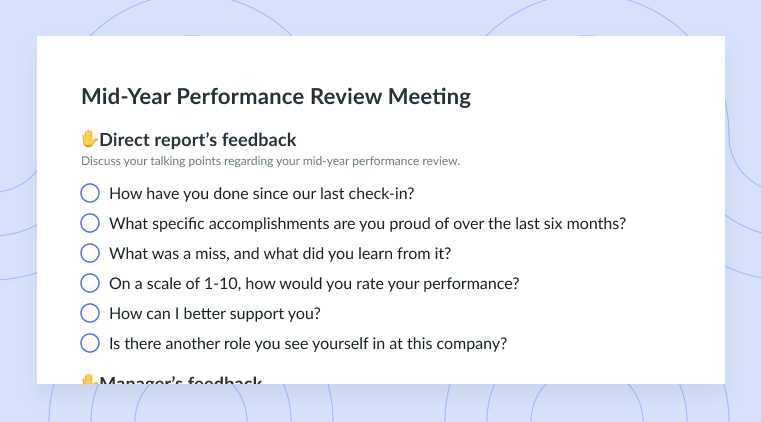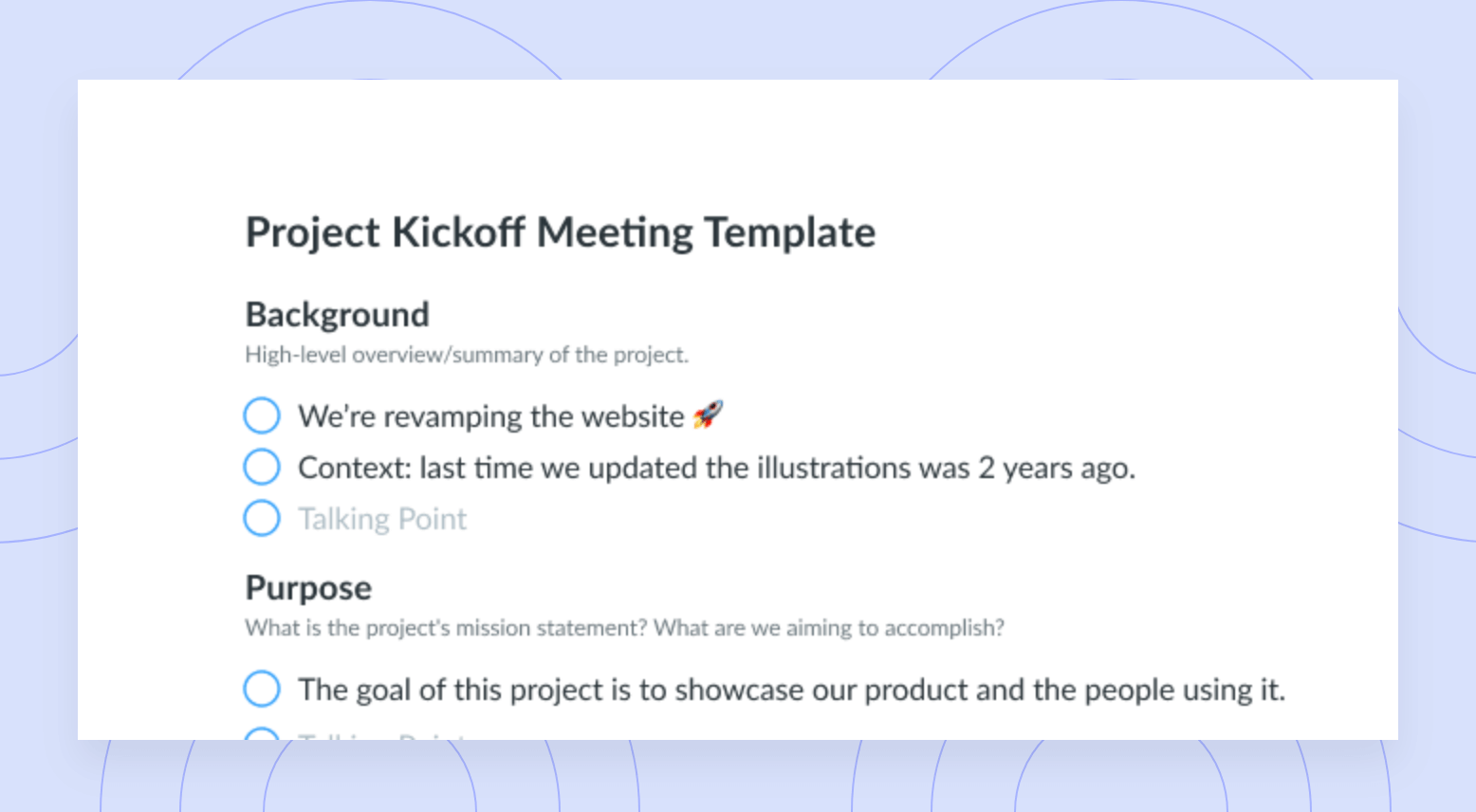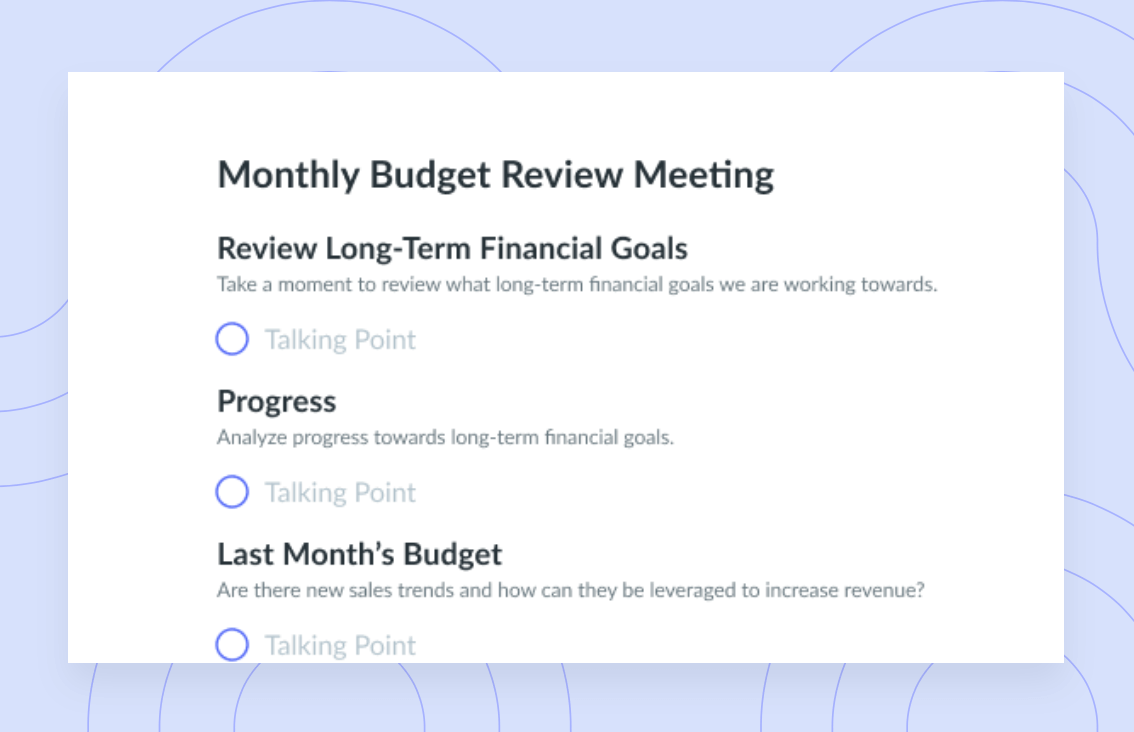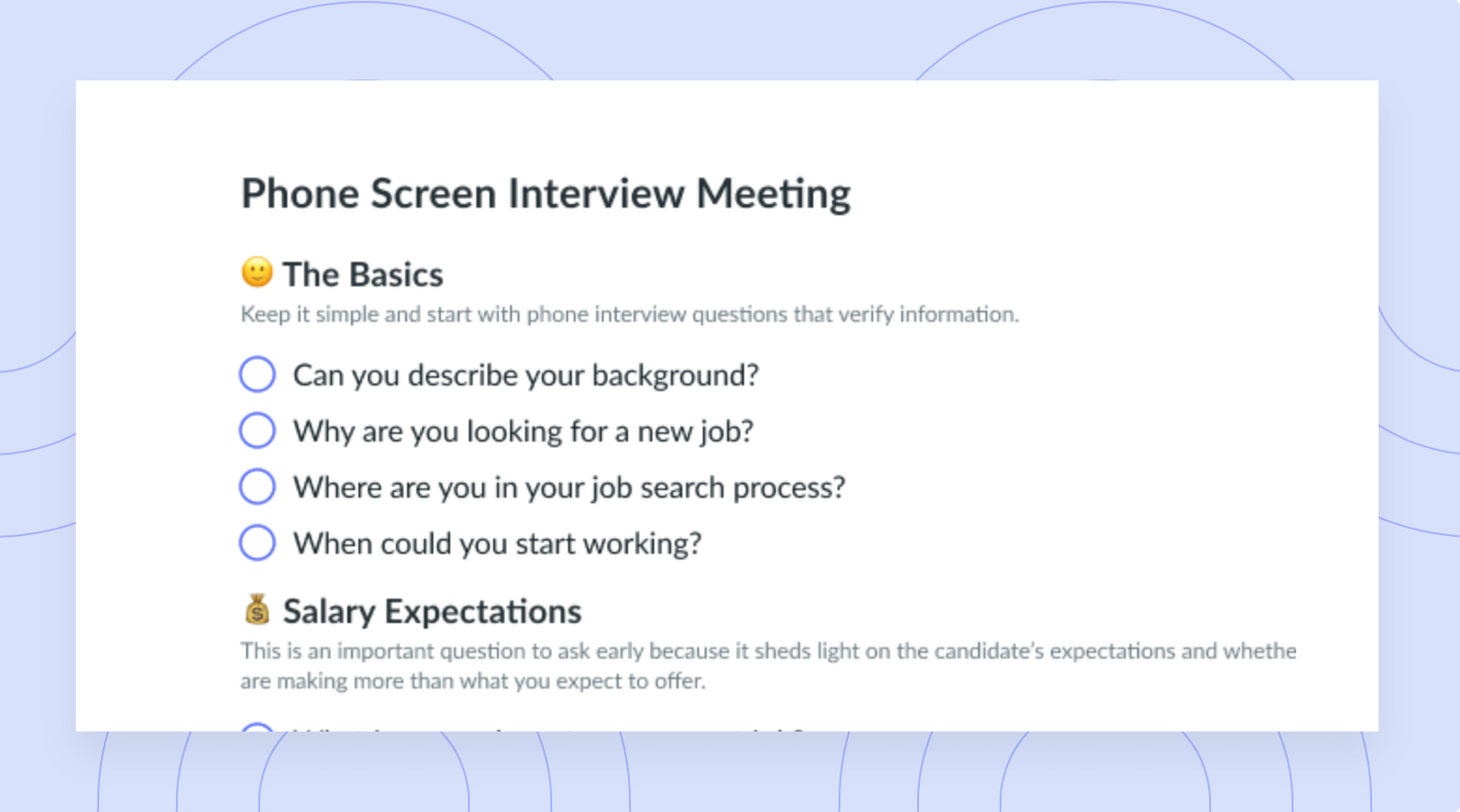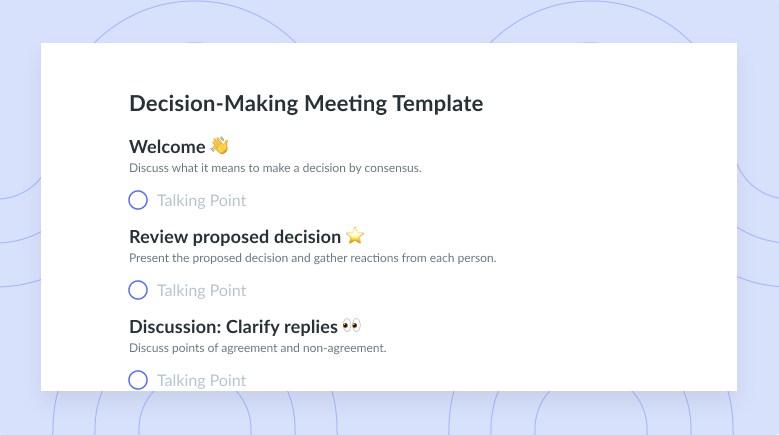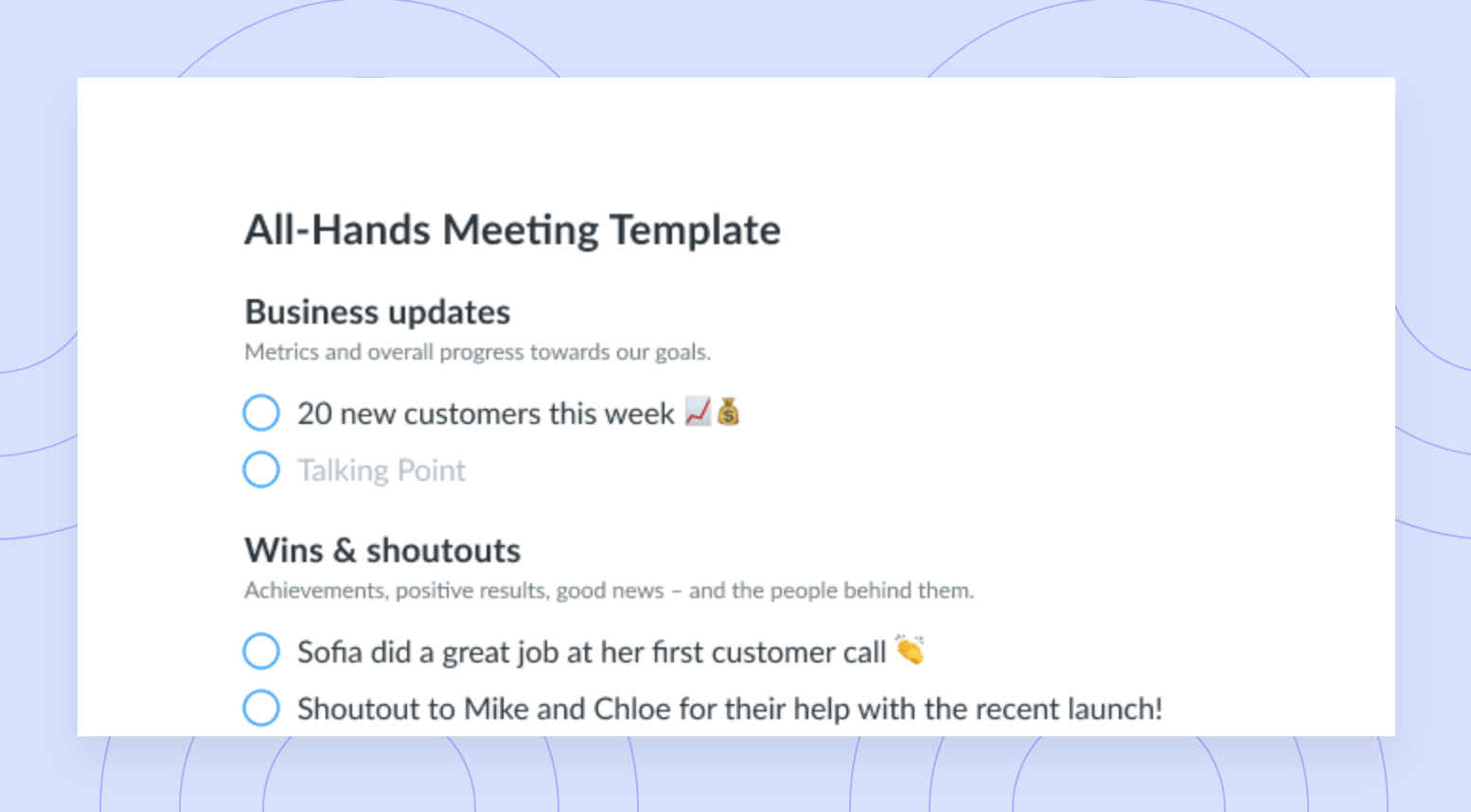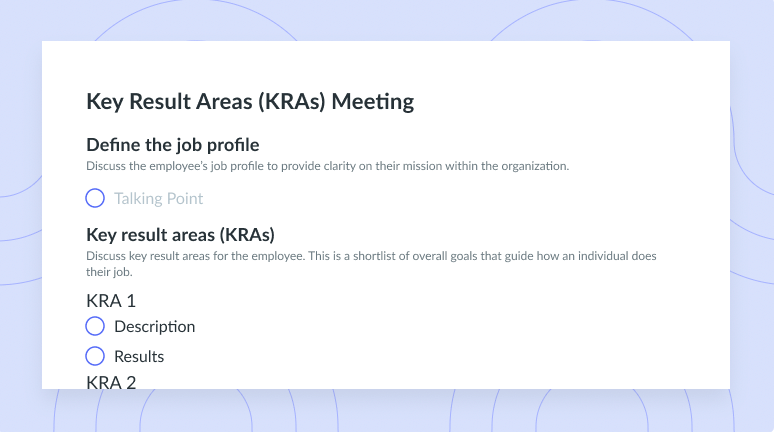AI for Managers: How Can Managers Use Artificial Intelligence?
See how managers can use AI to gain a deeper understanding of their business and identify areas for improvement.
Artificial intelligence (AI) is a hot-button topic at the moment. On one hand, some fear that AI may create misinformation, cyber-security threats, and lost jobs. On the other hand, new developments in the field mean that technology will be able to help companies achieve goals faster than ever before. AI can also help leaders make predictive decisions that guide their goal setting and lead to better outcomes.
Let’s explore the world of AI, review the benefits of AI for managers, and discover how you can incorporate AI into your team and company’s business strategy.
- What is artificial intelligence (AI)?
- Benefits of AI for managers
- How to incorporate AI into your business strategy
What is artificial intelligence (AI)?
In simple terms, AI refers to the simulation of human intelligence processes by machines. Companies use AI to perceive specific environments, solve problems, and even achieve specific goals. AI is used across fields like medicine, robotics, science, education, military, agriculture, business, and more to simulate human intelligence. Some of its most common applications include knowledge management, compliance, natural language processing, and speech recognition. AI can also help leaders perform tasks that would normally require humans, like decision making and reasoning.

Supercharge your productivity at work with AI
Prepare faster with suggested agendas, record and transcribe effortlessly, distribute simplified summaries, and flawlessly track action items with Fellow’s AI-powered features.
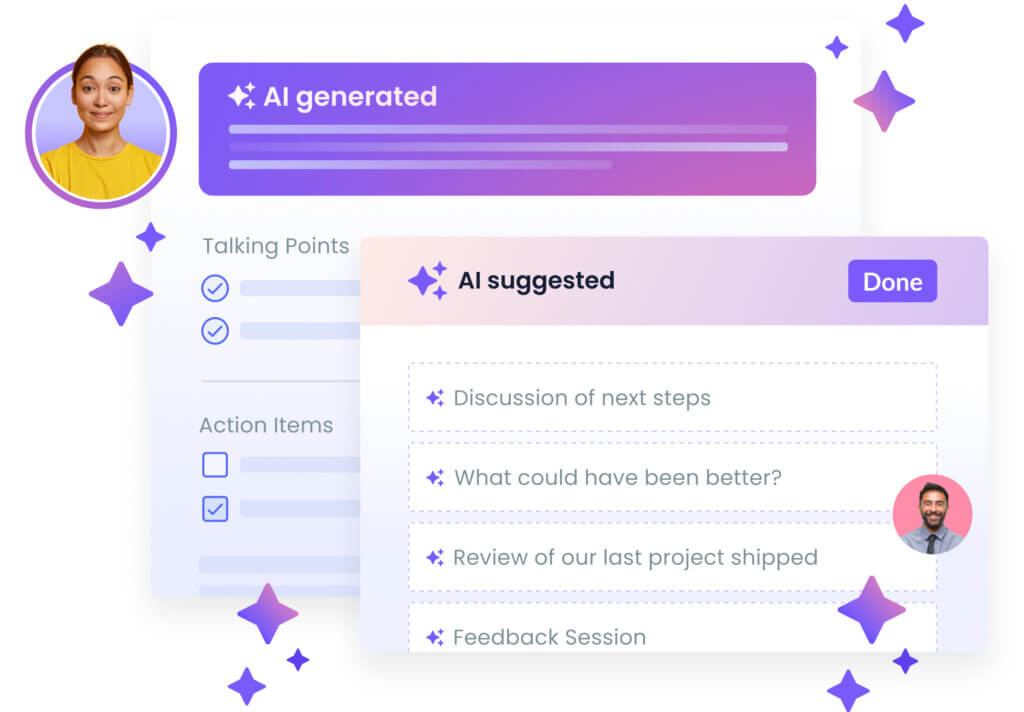
Benefits of AI for managers
- Automates tasks
- Analyzes data
- Improves decision making
- Improves operational efficiency
- Increases competitiveness
- Boosts employee productivity
1Automates tasks
Why not automate your most time-consuming tasks? Managers can use AI to automate mundane administrative functions like data entry to save their team time and money. Leaders can also use AI to schedule meetings, improve customer service through chatbots, and even screen applicant resumes when hiring for new positions. Many tasks in areas like record management, talent acquisition, customer support, purchasing, legal, and marketing can be easily automated.
Pro tip: With Fellow’s AI-powered meeting recaps, you can simplify meeting summaries and key points for efficient knowledge sharing.
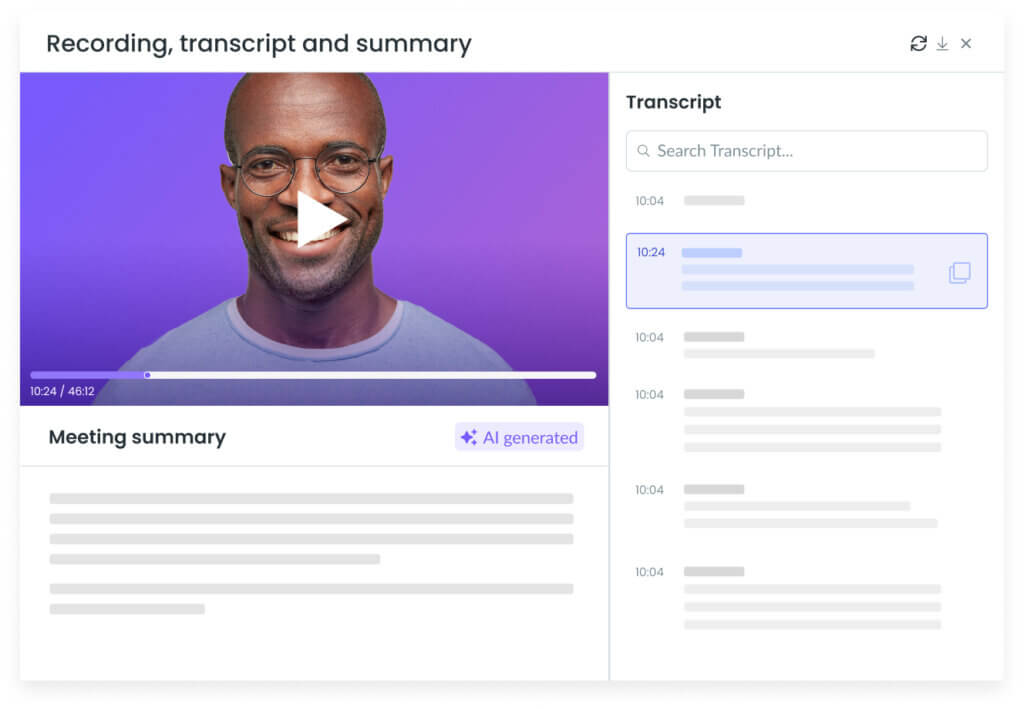
2Analyzes data
Managers who spend time analyzing data can use AI to make predictive decisions based on complex data sets that guide their decision making. AI can transform your data by offering transformational scale and speed that humans are simply unable to replicate. Additionally, AI algorithms can respond to business changes instantly, helping managers make better decisions based on real-time insight. There are a variety of AI tools on the market to help leaders and data analysts convert data into useful insights that drive excellent decision making.
3Improves decision making
While humans are still the greatest decision makers, AI can help you make accurate predictions regarding future events and trends based on data sets. Managers can simplify their team’s decision-making process by having AI analyze the demand for products and services, competition, and other factors. For example, airline companies can use AI to optimize ticket prices, making their offerings appealing to consumers and their business more competitive overall.
4Improves operational efficiency
Operational efficiency means using resources such as inventory, time, and people to optimize business practices. It also means maximizing your team’s output while reducing inefficiencies. With AI that monitors and measures performances, managers can easily boost their team’s productivity and competitive advantage. Some AI can also help your team streamline its workflow.
Did you know that you can use Fellow to record, define, and track the progress of your goals? Our Objectives tool helps teams keep track of meetings, metrics, and milestones so you can quickly review progress, resolve challenges, and keep your team on track to succeed.
5Increases competitiveness
Using AI will give your team and company a competitive edge. AI can help managers develop a deep understanding of their team’s strengths and weaknesses through interactions between employees and the tool. AI tools can also improve the speed of your service offerings, uncover new business opportunities, and gather customer insights to inform decision making. Before you know it, you’ll be soaring past your competition in areas like customer service, marketing, and sales.
6Boosts employee productivity
Employee productivity refers to the output produced by an individual or team in a specified period. It comes as no surprise that employees are bound to be more productive when they have the right tools. In episode 148 of our Supermanagers podcast, Chief Product Officer at Typeform Oji Udezue explains that managers shouldn’t fear AI, but should instead sell it to employees as a superpower! AI tools can increase human productivity by automating processes and reducing the number of manual tasks a group must complete.
How to incorporate AI into your business strategy
- Find the right AI tool
- Build a strategy for implementation
- Implement the tool company-wide
- Prepare for resistance
- Communicate the benefits of AI to your employees
- Foster a data-driven culture
1Find the right AI tool
First things first, you’ll need to commit to finding a tool that will improve your business operations. The right AI should fit within your team’s budget and have all the features you need to drive great results. Research the best AI tools on the market right now and test a few based on your needs before settling on one. Teams looking for notetaking capabilities should try Fellow. With Fellow’s AI-powered suggested talking points and AI-generated agendas, you can ensure that all your meetings are prepared, organized, and productive.
For more details on why Fellow should be your go-to tool for all things meetings + AI, watch this video:
2Build a strategy for implementation
You need to create a plan for how a new AI tool can be incorporated into your company and team’s existing work practices. Your AI implementation strategy should sell employees and leadership on the benefits of AI in the workplace. You must also understand the business implications of adopting new AI technology and be prepared to equip colleagues with the right skills and tools to see the strategy through. Do so by sharing a long-term vision with employees, answering questions, discussing concerns or challenges openly, and maintaining a flexible mindset throughout the process.
3Implement the tool company-wide
AI won’t provide your team with much value if it’s only used by a select few employees. Once you find an AI tool that works for you, strive to implement it company-wide. Your team’s AI transformation should help further your company’s mission. Do your best to minimize disruptions to existing workflows while you roll out the tool. Make changes to your existing systems on an ongoing basis so that it isn’t a jarring transition for employees and other stakeholders.
4Prepare for resistance
New digital tools with any kind of learning curve are often met with employee resistance. If employees come to you with hesitations, listen actively and empathetically to their concerns. Communicate what changes will come with a new AI tool and educate them on the value of the change. Reassure employees that they will be provided with ongoing support to ensure the transition is as smooth as possible.
Once you implement the tool, use Fellow to check in with employees and see how the implementation process is going. Create a collaborative meeting agenda for your regular team meetings and one-on-ones that includes a few minutes to discuss the AI tool, answer questions about it, or work through roadblocks.
5Communicate the benefits of AI to your employees
There must be employee buy-in for any new tool to integrate with a workflow. When it’s time to implement an AI tool, set up a meeting with your teammates to discuss the tool and the changes it will bring, and explain how it will make your team more efficient. As a manager, you should own the changes and encourage a supportive work environment. Ask that employees lean on one another for support during the transition period.
Lastly, get your employees excited at the prospect of using AI! Explain how AI has been beneficial across industries and will only improve the great work your team is already doing.
6Foster a data-driven culture
Technology is the future of the workplace (and arguably the present too!). When the culture of a workplace is data driven and digital first, employees feel confident using digital tools to quantify uncertainty and determine whether certain ideas will work. Encourage your team to use tools that speed up processes, help them learn new skills, and make better decisions.
Remember: Data-driven culture begins at the top. As a manager, you must set the expectation that team decisions are anchored in data. One way to do so is by using Fellow’s Analytics feature to improve your meetings. Gain insight into your company’s productivity patterns to prevent meeting overload, understand your company’s meeting etiquette, and ensure the best meeting processes are being used with our straightforward software.
Parting advice
Remember, only humans can put their learned information to use by combining it with comprehension, thinking, and rationality. Partnered with human ingenuity, AI tools can bolster your team’s existing talents and help your team reach new heights.
Not sure where to start? Check out our blog on how to choose the right AI meeting tool for your team or our guide to taking great AI meeting notes. Better yet, try Fellow to level up your meetings, enhance communication, and build a great feedback culture before you add AI to your roster of digital tools.





![How to Run an Effective Weekly Team Meeting [Free Agenda Templates]](https://fellow.app/wp-content/uploads/2019/10/Weekly-Team-Meeting-Agenda-Template.jpg)
![How to Effectively Name Your Meetings [+Examples]](https://fellow.app/wp-content/uploads/2023/09/meeting-names.jpg)


